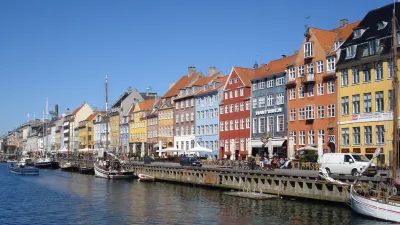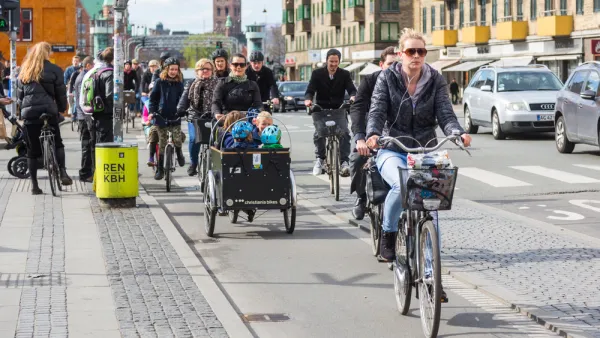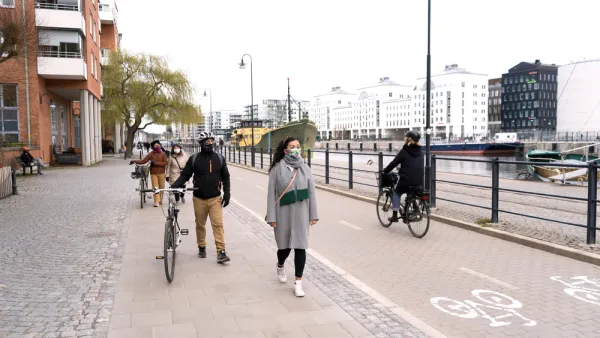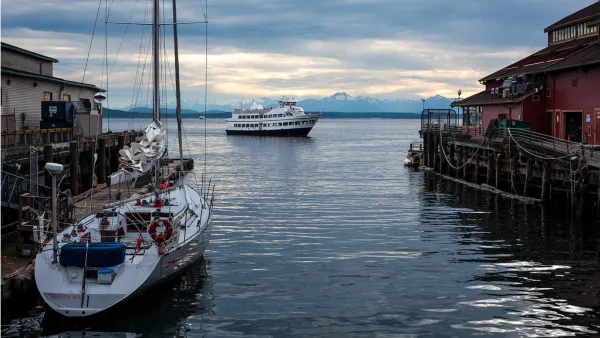Copenhagen is often cited as the world’s most livable city—a city characterized by bicycles and shared open spaces. But the road to get there has required compromise among politicians and an active and engaged community.

Copenhagen has been called the world’s greenest and most livable city, and it has the added benefit of being capital of the world’s happiest country, Denmark. Writing in Next City, Feargus O'Sullivan finds that the ascendancy of Copenhagen hasn't been as smooth as many believe and additional challenges on the horizon, including a dearth of affordable housing remain a problem for the city.
Right now, for example, Copenhagen is considering a new harbor tunnel that, if built, could end up flooding the city center with cars. Growth in housing demand is galloping ahead of home building, causing higher-than-ever housing costs. Some key housing schemes built so far have made some missteps and predominantly targeted the already well-served rich.…
The urbanism movement’s model city is not immune to the challenges of growth, climate change and increasing economic disparity.
Where Copenhagen has succeeded is in the willingness of its leaders to seek compromise, an outcome of the country's multi-party system. Proposals won't survive unless, as O’Sullivan writes, "their arguments aren’t backed up by data." Risk taking and engagement inside and outside of government is also cited as one of the city's strengths. Progressive activists have rallied to save open space and force better bicycle infrastructure, while one city engineer worked to reduce parking in the city through "stealth urbanism." O'Sullivan provides this interesting anecdote from Copenhagen architect Jan Gehl.
“For many years, Copenhagen had an excellent city engineer who said ‘if you can’t park, you don’t drive.’ Then he said ‘I’ll take 2 percent of the parking out of downtown every year, and I won’t tell anybody so nobody will notice.’ So every year, he reduced the amount of parking space and put in more tables, more chairs,” Gehl recalled at a forum hosted by The Atlantic in October. “The place became nicer and nicer, and people changed their habits, taking their bikes or the bus or metro. Over a period of time, the pattern of behavior has changed. You could call it stealth urbanism.”
FULL STORY: Even Copenhagen Makes Mistakes

National Parks Layoffs Will Cause Communities to Lose Billions
Thousands of essential park workers were laid off this week, just before the busy spring break season.

Retro-silient?: America’s First “Eco-burb,” The Woodlands Turns 50
A master-planned community north of Houston offers lessons on green infrastructure and resilient design, but falls short of its founder’s lofty affordability and walkability goals.

Delivering for America Plan Will Downgrade Mail Service in at Least 49.5 Percent of Zip Codes
Republican and Democrat lawmakers criticize the plan for its disproportionate negative impact on rural communities.

Test News Post 1
This is a summary

Test News Headline 46
Test for the image on the front page.

Balancing Bombs and Butterflies: How the National Guard Protects a Rare Species
The National Guard at Fort Indiantown Gap uses GIS technology and land management strategies to balance military training with conservation efforts, ensuring the survival of the rare eastern regal fritillary butterfly.
Urban Design for Planners 1: Software Tools
This six-course series explores essential urban design concepts using open source software and equips planners with the tools they need to participate fully in the urban design process.
Planning for Universal Design
Learn the tools for implementing Universal Design in planning regulations.
EMC Planning Group, Inc.
Planetizen
Planetizen
Mpact (formerly Rail~Volution)
Great Falls Development Authority, Inc.
HUDs Office of Policy Development and Research
NYU Wagner Graduate School of Public Service





























